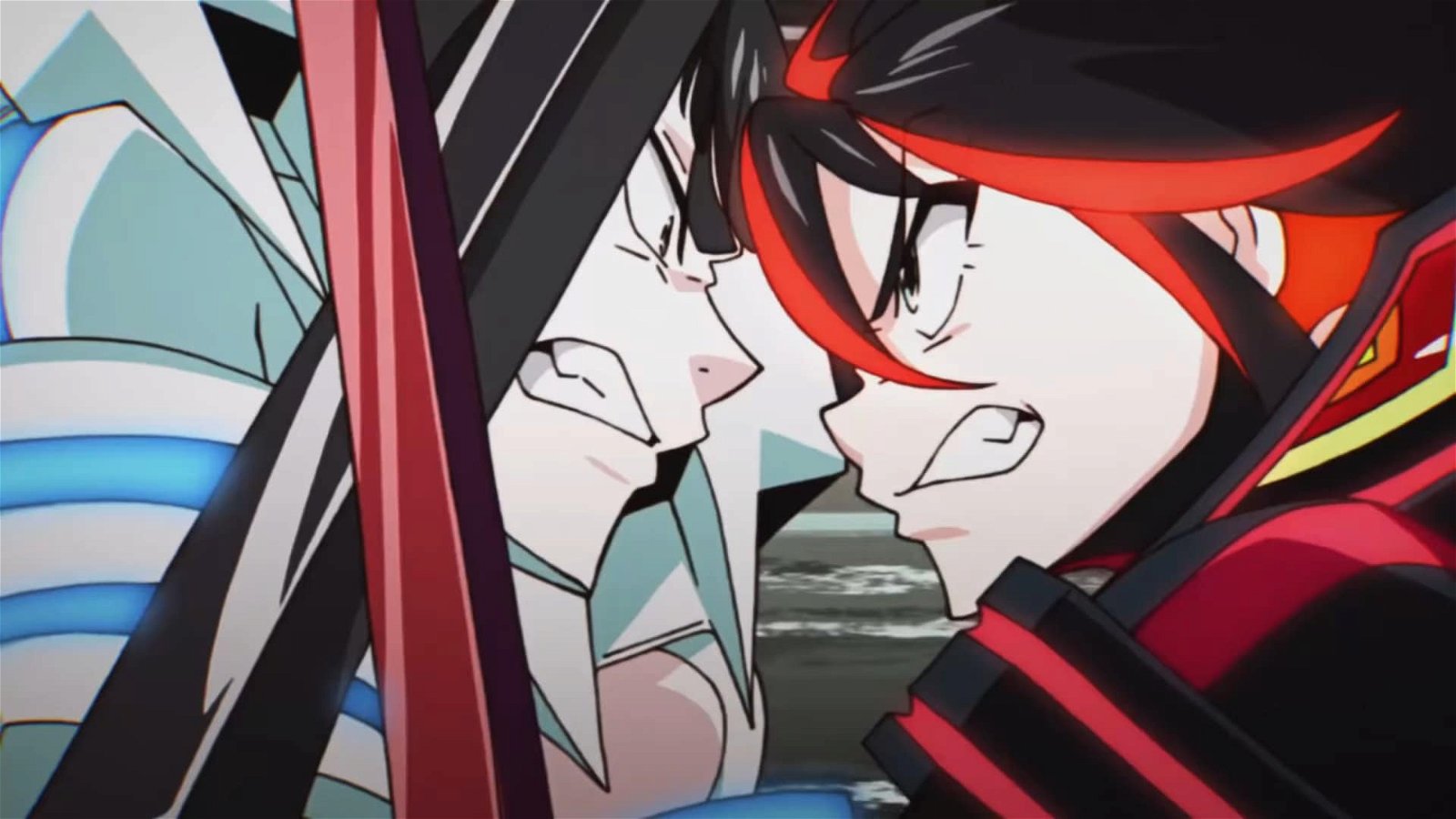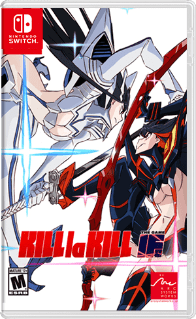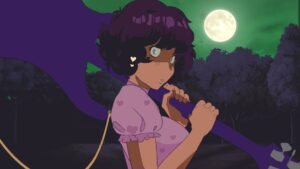You’ve probably heard a thing or two about licensed arena fighters. Somebody’s either dismissing or gushing over the newest Naruto Ultimate Ninja Storm, or… having the exact same reactions to Jump Force, Dragon Ball Xenoverse, and so on. These games bank hard on style over substance (a 40-man roster with enough attacks for 5 characters doesn’t count as “substance”), and that’s given the whole subgenre a reputation for mediocrity. Kill la Kill the Game: IF is aware of that, and strove to do better.
I’m of the stance that you need context to truly understand how good or bad a piece of media is. To that end, I’ve subjected myself to everything from games that are still run in small competitive scenes (One Piece: Grand Battle), to the worst trash I’ve ever played (Iron & Blood: Warriors of Ravenloft). Because of my journey into the unknown, I feel that I can accurately describe an arena fighter on a qualitative scale, even just by laying eyes on it. And I’m happy to tell you that Kill la Kill: IF is very high up on that scale, surpassing the Naruto games it modeled itself after – and all it took was the fighting game masters at Arc System Works, working in tandem with APlus!

Let’s get one of the negatives out of the way first. There’s a small snag — there always is — but this one isn’t so bad if you’re not in it for the story. When you first boot up Kill la Kill, the only things available to you are the Story mode and a small Options menu. You need to complete the tutorial in Story mode to unlock offline Versus mode with two-thirds of the cast, a couple of Practice modes, and the Gallery suite. If you skip the cutscenes, you can easily do this in about 3 minutes; with them, you’ll take about 10. A run through the primary scenario only takes about 4 hours, and without cutscenes, you can unlock every character, arena, and mode in about 2 hours. It’s rather like Super Smash Bros. Ultimate in that respect and maybe even quicker.
We’ll leave the rest of the muck for later. And now, the main event: the gameplay. Ah, the gameplay. It looks good and feels even better. As an overview, Kill la Kill: IF is a 1v1 arena fighter (a rarity nowadays!) that can be basically described as Dragon Ball FighterZ in 3D with a few less mechanics. That doesn’t sound great, but it’s a 3D game, so movement and positioning are a bit more involved. I bet there’s a bit of that arena fighter stigma behind the “not great” sentiment, so let me explain further. Kill la Kill the Game: IF is a snappy game. It runs at a solid 60 fps (30 for Switch, still solid), and the characters feel good to control. Most of their actions are very fast, and even the ones that aren’t have shorter recovery times than startups, allowing for long combos that will remind viewers of an average Arc Sys fighting game. This is all noteworthy because most arena fighters aren’t like this. Even the choppiest 2D fighter can fall back on copying Street Fighter 2, a template arena fighters lack.
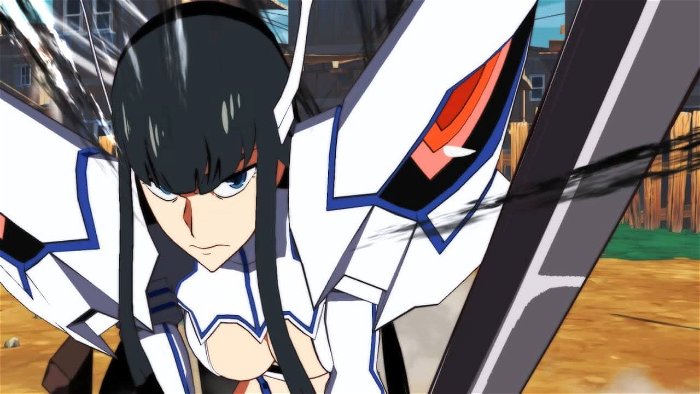
There’s a number of other basic fighting game fundamentals that KlK nails in defiance of its subgenre’s subpar norms. Every one of the ten character feels unique, up to a couple having Arc Sys’ trademark extra resource meters. You’ve got recognizable archetypes like a shotoclone (think Ryu from Street Fighter), some re-balanced versions of said shoto, rushdown, a heavy, a zoner, a trap character, and a defensive character, and you can identify them all at a glance. That’s all on top of each character expressing their personality and highlight moments through their movesets (Gamagori growing to house-size is expected, but Dual-Wielding Satsuki growing is one heck of a deep cut).
Make no mistake: this is not a Naruto or Dragon Ball game with 80 characters, 70 of them clones. The devs set a limited scope of 10 characters at launch with at least two free ones later, and spent the year-and-a-half/two years building them, presenting them for public testing, and polishing them. A brand new fighting game (so, not Smash Melee and onward, The King of Fighters ’98 on, or Marvel Vs. Capcom 2 on) launching with 6-16 characters is a completely normal occurrence, and while it may make the game appear to lack casual value, it’s the simple reality of game development. Quality, quantity, speed, affordability; pick two.
Sorry for the tangent, but understanding development cycles is important in game evaluation. Speaking of which, I still haven’t covered the basic mechanics! You have three primary attack buttons: regular, ranged, and (guard) break. Regular attacks come in the form of short auto combos with different enders that can usually combo into just about any other attack your character has, as well as an anti-air attack that hits above you (which works well against jump-ins and airdashes) and a wide attack that hits around you (good for dealing with a foe dodging around you) on directional inputs. Ranged attacks can usually be charged to turn them into something else on the ground and in the air. Break attacks take a second to charge, but they can be followed up by pressing a face button to dash after the opponent and continue your combo, similar to the homing dash in Dragon Ball FighterZ. Combine with wallsplats, you can freestyle with a lot of combo paths, especially in one of the smaller arenas.
Holding the left bumper and pressing an attack button will trigger one of your three supers, taking up 50% of your total meter. Right trigger is for blocking, quickstepping in a cardinal direction (or around the opponent if you step into them), and initiating a projectile-invincible grounded homing dash directly towards the opponent by pressing it alongside the jump button (just like ol’ Dissidia~<3). During said homing dash, each of your attack buttons will change to a different attack, and a third set of attacks will be present in the air. Pressing jump twice will trigger an aerial homing dash with the same properties as a ground dash, and that leaves the right bumper free to serve as a very fast airdash that can be used to fake out opponents.
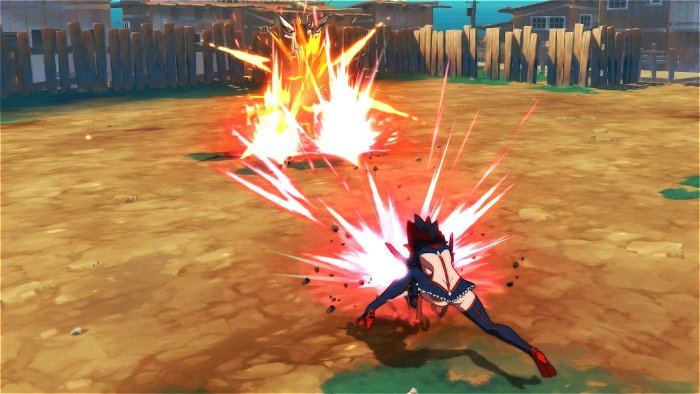
Capping this reasonably healthy move pool is a burst used with both bumpers and 50% of your meter. This can be used to break combos (and will be available eventually due to your meter building while you’re being hit), or you can use it offensively as a Valour Burst. A successful Valour Burst will deal a small chunk of non-lethal damage, and you and your enemy will initiate Bloody Valour, a short, three-second-long game of rock-paper-scissors where you hurl insults at each other. Yes, weaponized trash talk. It’s great. For the initiator of the Burst, each option has a bonus applied to it that you’ll gain if you win or draw. The victim needs to win to get anything, and all they’ll do is deal a bit of non-lethal damage. This can carry on for up to three rounds if the initiator keeps winning, each victory or tie increasing your character’s star level in addition to other rewards. You start with no stars, and can get up to three. What these stars do is different for each character, but they’re always some kind of buff. Ryuko’s first star speeds her up, her second changes one of her supers, and so on. The third star gives you regenerating meter and replaces Valour Burst with an instant kill. This costs 100% of your meter, but you can easily combo into it, so at this point, the match is probably over.
Bloody Valour is a weird side system that breaks up the flow of normal matches, but it can lead to lasting consequences in the main battle. Also, a long RPS match can build a lot of stress and hype. The dynamic soundtrack kicks in as a character gains more stars, culminating in their anime theme playing during their instant kill. You can skip the argument cutscene as well, which is nice. The fact still remains that it’s a weird side system, and it’s gonna’ have it’s lovers and haters. At least it requires meter commitment and for the attacker to break their own combo (if they don’t land it raw), so it’s already less spam-able than Soul Calibur VI’s similar Reversal Edge. I would still like a toggle to be patched in that just gives you a star for every Burst you land, though.
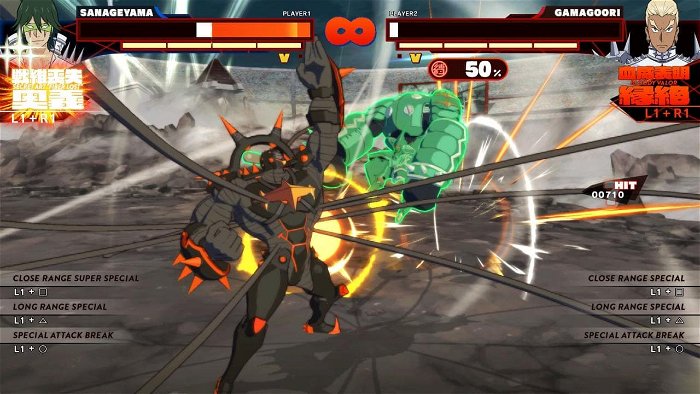
Now, about the story mode… that’s where the game’s biggest issues lie. This is not a retelling of the Kill la Kill storyline like the average licensed fighter. This is a thought experiment made by fans, for fans, as evidenced by the “IF” in the title. The entire crux of the story is that a couple of characters were shifted around early on. If you haven’t watched the show, not only are you not going to realize what’s happening, you’ll be bombarded with minor spoilers before the tutorial starts. If you want to connect with the characters at all, watching the anime first is the only way to do it. It’s a fantastic show, so it’ll be worth your time to see Studio Trigger’s masterful animation in its proper context. The rest of the game does a great job presenting the cast’s personalities, but you’re gonna’ need to watch the source material at some point to really “get” them.
That brings us to the game’s second-biggest issue, also in story mode: the cutscenes. APlus Studio is neither Arc Sys themselves nor UNS developer CyberConnect2. They aren’t as practiced at 3D animation, and it shows. This game apes the visual style of Arc’s cell-shaded Guilty Gear Xrd line, though with less extraneous details present due to KlK’s simpler art. The battle animations have been polished a lot since they were first shown last year, and they’re all good looking, sounding, and paced (short supers in an arena fighter? News to me!). The story mode is another matter. There is a lot of effort, especially early on when the story is close to the show’s, to recreate Trigger’s many animation quirks and special effects (Ragyo’s appearance in a shrinking rainbow circle, for example). It’s earnest but falls flat due to inferior pacing, cinematography, and lacklustre sound design that plagues the whole mode. In the end, APlus managed to capture a rough approximation of Trigger’s animation with Guilty Gear Xrd‘s art, but it’s just not as good as either.
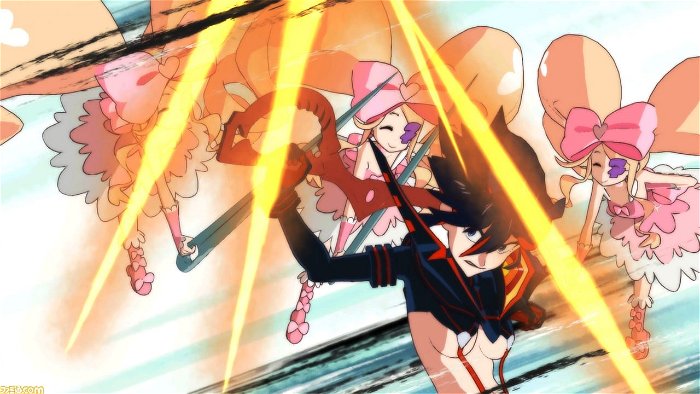
Since we’re on the subject, I should probably mention that, besides the for-fans plot and iffy cutscenes, Kill la Kill‘s singleplayer offering is actually considerably better than the average modern fighting game! APlus and Arc Sys were clearly aware of the issues that plagued fighting game story modes, and decided to do something few other fighting games have done: mix things up. There are no traditional levels, per se, but Kill la Kill‘s nature as a 3D action game lends itself well to horde fights and fatal four-ways, and other things that aren’t possible in normal play. You unlock the horde fights as their own mode, but a bunch of these experiences are story-exclusive, and I think they’re pretty neat. Much like the rest of the game, Story mode is available in four difficulties and comes with the unique replay-ability factor of a ranking system. Ironically, taking Naruto as a source of inspiration was correct in this case, even if Kill la Kill doesn’t hit the highs of Naruto‘s bosses.
Anyways, there’s a fair bit of window dressing to fill out the rest of this game. There’s a small selection of stages, but they all have different shapes and sizes, and that does make them functionally different. Online mode is unlocked after normal versus, which is a no-no – though once again, two hours if you gun it. The netcode seems to work alright, though it’s a bit too early to tell. It’s a Japanese game so it won’t be the best, but it’s also an Arc Sys game (kind of) so it won’t be Smash Ultimate. As usual, use an ethernet cord for the best experience… and consider playing on anything but the Switch.
The Glossary is full of detailed descriptions of just about everything in Kill la Kill, and the sound tests (unlocked through currency you’ll accrue through play) are stuffed to bursting with anime music, the full dynamic soundtrack, and even some bonus voice lines (in Japanese and English, of course) that I urge you to check out for yourself. There’s also a Diorama mode filled with pose-able figurines that you’ll unlock through certain criteria, and Switch players can treat it like a minor trophy list. Speaking of which, all trophies are obtain-able offline, and platinum-ing the game is just a matter of time and mid-level skill – and, I hope, investment.

Normally we’d be done with the game’s feature list by now, but once again, this ain’t your average arena fighter. Kill la Kill: IF has a few more modes up its sleeve, and it copied from the brightest kid in class: Super Smash Bros.! That’s right, a bunch of Smash’s extraneous modes have cropped up in this game, and I’m happy to see ’em! 1-Minute Brawl, Endless Brawl, 100-Man Brawl, a Survival mode, and a special horde mode are all available for your score-attacking delight. These aren’t exactly high-effort features, but after so many modern fighters that just have the bare necessities, it’s nice to see someone try just that little bit harder.
And that’s the last stitch! Kill la Kill the Game: IF isn’t the deepest of fighters, and it isn’t the most content-rich, but it surpasses its 3D peers with style and aplomb. I’m interested to see what the community at large comes up within the coming weeks, and I’m equally interested to read the translated patch notes for the HUMONGOUS day one update. I hope to see support continue past the two free characters we’ll be getting later this summer, as the character select screen is set up to support a lot of different versions of the cast – and if Kill la Kill does one thing better than anyone else, it’s making dozens of super-empowering outfits that all look great. If people can look past what Kill la Kill the Game: IF is and isn’t, they’ll find a fantastic love letter to fans and a great simple fighting game that can keep them occupied for hours.
